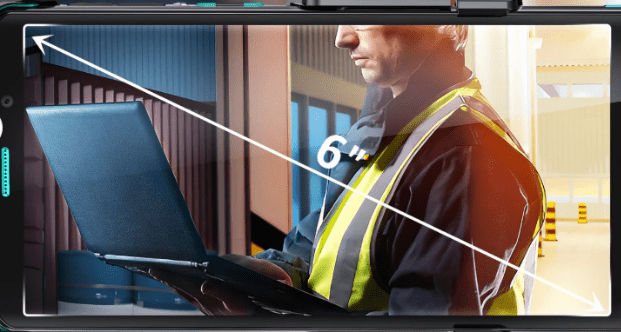When it comes to maintaining your home or commercial property, few features are as important as the roof. It acts as the first line of defence against Australia’s unpredictable weather, from blazing summer heat to fierce storms and heavy rainfall. However, roofs don’t last forever. Over time, they can wear down, develop leaks, or suffer damage from natural events. At some point, you may face the big question: does your property need a roof repair, or is a full roof replacement the smarter option?
Understanding the difference between the two and knowing which one is right for your situation can save you a significant amount of money while protecting your property’s structural integrity. This article will guide you through the signs, benefits, and long-term considerations of both approaches, helping you make the most informed decision possible.
The Importance of a Healthy Roof
Your roof plays a critical role in protecting your home or building from water ingress, pests, mould, and temperature fluctuations. A damaged or deteriorating roof can lead to internal issues such as insulation breakdown, ceiling stains, timber rot, and increased energy bills. Keeping your roof in good condition isn’t just about avoiding major damage—it’s also about maintaining the aesthetic appeal and value of your property. For homeowners considering a future sale, a new or freshly repaired roof can significantly boost curb appeal and buyer confidence.
Understanding the Difference: Roof Repair vs Roof Replacement
Before diving into the signs that indicate whether you need a repair or replacement, it’s important to understand the basic difference. A roof repair is a targeted fix. It addresses specific issues such as a leak around a chimney, a few broken tiles, or minor flashing damage. This solution is generally quicker and more affordable, and is often suitable when the rest of the roof is in decent condition.
In contrast, a roof replacement involves removing the entire existing roofing system—including tiles or metal sheets, underlayment, and sometimes structural components—and installing a new one. This is a major project that offers long-term peace of mind and adds considerable value to your property. It’s usually necessary when the roof has reached the end of its lifespan, or when repairs are no longer cost-effective.
Key Signs You May Only Need a Roof Repair
Sometimes, problems with your roof are isolated and manageable. One common example is a localised leak. If you notice water stains on your ceiling or occasional drips during heavy rain, this may be due to faulty flashing or a cracked tile. In many cases, these issues can be resolved with a quick roof repair, preventing further damage without the need for major investment.
Another sign you might only need repairs is the presence of a few broken or loose tiles. Concrete and terracotta tiled roofs are common across NSW, and individual tiles can be replaced without disturbing the rest of the system. If the roof is otherwise in good condition, there’s no need to replace the entire thing.
Biological growth, like moss, algae, or lichen, can make your roof look unsightly and, over time, contribute to tile degradation. However, this is usually a surface-level issue and can often be treated with roof cleaning and resealing rather than full replacement.
Lastly, if your roof is relatively new—under 15 years old for most materials—it’s more likely that targeted repairs will extend its lifespan significantly. In these cases, routine maintenance and timely fixes are often all that’s needed to maintain performance and prevent deterioration.
Indicators That a Roof Replacement Is Necessary
Despite the appeal of a quick fix, some roofing issues go beyond what a repair can reasonably address. One of the most obvious signs that you may need a roof replacement is extensive water damage. This could include sagging ceilings, rotting roof beams, or mould spreading across the interior. If water has compromised the structure itself, replacing the entire roof becomes the safer and more effective option.
Another warning sign is a sagging or warped roofline. A healthy roof should appear straight and even. Sagging typically indicates damage to the internal supports or frame, which often means a full rebuild is necessary. Attempting a roof repair on a structurally unsound system is not only ineffective but potentially dangerous.
Repeated repairs are also a strong indicator that it might be time for a new roof. If you’ve patched multiple leaks over the past few years and issues keep reappearing, it may be more cost-effective in the long run to invest in a roof replacement. Continually paying for small fixes can end up costing more than doing the job properly once.
Additionally, roofs that are nearing or have surpassed their expected lifespan—generally 20 to 30 years for metal roofs and 40 to 60 years for tiles—may not respond well to repairs. Materials degrade over time, and once the integrity of the system is compromised, only a full replacement can guarantee long-term performance.
The Role of Storm and Weather Damage
Australia’s weather can be unpredictable and severe, particularly in coastal and regional NSW. High winds, hailstorms, and bushfire debris can all cause significant roof damage. In the aftermath of a storm, it’s vital to assess the roof thoroughly. Hail can dent metal roofs or crack tiles, while heavy winds may dislodge components or drive rainwater into vulnerable areas.
In some cases, the damage is localised, and a roof repair is all that’s needed. However, if a storm has caused widespread damage across the entire roof surface or if repairs would be too extensive to ensure durability, a full roof replacement is likely the safer route.
Why Early Action Saves Money
Delaying roof maintenance is one of the most common mistakes property owners make. Small issues tend to escalate when left untreated. For example, a single broken tile might allow water to seep through, soaking insulation and weakening the roof frame over time. What could have been solved with a quick roof repair might eventually require a full structural overhaul.
Acting early not only preserves the structural integrity of your property but also saves money. Catching and addressing problems when they’re small minimises labour costs and avoids expensive damage to ceilings, walls, and flooring.
The Value of Professional Roof Inspections
The most accurate way to determine whether you need a roof repair or roof replacement is through a professional roof inspection. Reputable roofing contractors use tools like drones and thermal imaging to assess hidden damage and provide a comprehensive report. These inspections evaluate the entire roofing system, including tiles or sheeting, flashing, valleys, gutters, and insulation.
A qualified roofer will give you a detailed quote that outlines all options available, the estimated costs, timelines, and expected lifespan of any proposed solution. This kind of transparency helps homeowners and property managers make decisions based on long-term value rather than just upfront cost.
Factors That Influence the Final Decision
Several elements come into play when deciding between a roof repair and a full roof replacement. These include the age of your roof, the extent of visible damage, how often repairs have been needed in the past, and your long-term property goals. For example, if you plan to sell your home within the next few years, a new roof can increase its market value and make it more attractive to buyers. On the other hand, if your budget is limited and the issues are manageable, targeted repairs may be the more practical option in the short term.
Environmental factors also matter. Homes in high-humidity areas, coastal zones, or bushfire-prone regions face different challenges that affect how quickly a roof deteriorates. Using durable, appropriate materials in your next roof replacement can help you get the most out of your investment.
FAQs: Roof Repair vs Roof Replacement
How can I tell if a leak is serious enough for a roof replacement?
A small leak isolated to one area may only need a quick roof repair, especially if caught early. However, if the leak has persisted for a long time or affects multiple areas of the roof, it could be a sign of systemic failure that warrants a full roof replacement.
Are older roofs always candidates for replacement?
Not always. Age is a factor, but not the only one. Some older roofs, especially those that have been well maintained, can still perform adequately. A professional inspection will determine whether repairs can extend its life or whether replacement is more practical.
Is roof replacement covered by insurance?
Insurance may cover roof replacement if the damage is due to a specific insured event, such as a hailstorm, a fallen tree, or a fire. However, general wear and tear are not usually covered. Always check your policy and consult with your provider.
Can roof repairs be done in winter?
Yes, but with some limitations. While roof repair can be performed during cooler months, heavy rain or wind may delay the process. Roofing contractors will assess the weather and schedule accordingly to ensure safety and quality workmanship.
What materials offer the best longevity for a new roof?
Colorbond steel is a popular choice in Australia due to its durability, fire resistance, and low maintenance. Terracotta tiles also offer long life and natural insulation properties. The best choice depends on your climate, budget, and design preferences.
Final Thoughts: Making the Right Choice for Your Roof
Deciding between a roof repair and a complete roof replacement is more than just a matter of cost. It’s a decision that affects the safety, value, and performance of your property for years to come. While a simple repair may fix minor issues and extend your roof’s life, there are times when replacing the entire system is the smarter, more cost-effective move.
Understanding the signs, acting early, and consulting with qualified professionals are the best ways to ensure your roof remains in top condition. Whether you’re a homeowner, commercial property owner, or property manager in NSW, being proactive about roof maintenance ensures your investment is protected, no matter what the weather brings.










